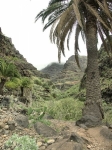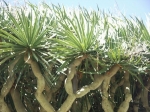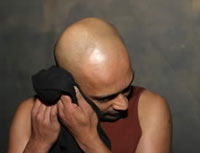 The final part of kathak dancer Khan's trilogy of solos on the South Bank. Central solos from the first two parts of his trilogy, Polariod Feet and Ronin plus a new solo. Khan on stage with five musicians, including singer Faheem Mazhar and BC Manjunath, the percussionist from his company's current touring show, 'ma'.
The final part of kathak dancer Khan's trilogy of solos on the South Bank. Central solos from the first two parts of his trilogy, Polariod Feet and Ronin plus a new solo. Khan on stage with five musicians, including singer Faheem Mazhar and BC Manjunath, the percussionist from his company's current touring show, 'ma'.
A performer whose work has consistently mesmerised me, not just because of his compelling stage presence, but also because of his very evident deep commitment to his art. In an interview in 'The Times', Khan describes his work as 'an offering', meaning that it is to be read as an expression of his spirituality. That intense feeling moved me, but there was also wit and wonderful precision. Khan held the stage with beauty and astonishing control. He has the ability to switch seamlesly from the most rapid and energetic movement to one of langorous delicacy, and this was especially visible in his first solo, which depicted the duality of the male and female principles in Hindu Gods.
In the second half Khan came to the microphone to gently teach the audience about kathak. Compelling improvisations followed, with the joyful collaboration of his musicians.
His next contemporary performance will be 'Zero Degrees', a collaboration with Anthony Gormley at Sadler's Wells next July. In 2006 he will dance with Sylvie Guillem.
Times article
diaphania - Page 12
-
Akram Khan in 'Third Catalogue', Purcell Room, 14.4.05
-
La Gomera 2
The full moon glittered silver on the water as we gazed out to sea from the Santiago shore. Waves crashed in on the shingle, tumbling white foam and surging towards us. The Atlantic pulled back, sucking the water fast down shore, drawing back the rolling shingle, sending it racing downwards to the sea. Way above the horizon and out beyond the rough red cliffs we thought we could still make out snow on the peak of Mount Teide, across the sea on Tenerife. The wind that at sunset had torn at the date palms was gone and the scent of orange blossom floated in the warm night air.
Here on Gomera in the Canaries we have walked in easy companionship together. Once to the Guro waterfall, reached along a narrow gorge where a cat twitched its tail on a ledge high on the far gorge wall.
On a 6-hour trek we climbed 900m from the sea at Hermigua up the Cedro stream and past a reservoir with golden carp that tempted me to swim. Some islanders had lugged a cultivator up there to turn over the dusty soil. Even the remotest spot is turned to productive earth by the building of narrow terraces, irrigated from tanks of carefully stored water.
At the head of the valley, arum lilies grew along the stream banks. Tame goats gently butted us and a man emerging from his tent waved as we walked through the camp site for tea and ice cream.
We visited the island's only dragon tree, the blood red sap of which was collected because when hardened it could be used to make jewellery.
We picked our way through prickly pears once grown for cochineal beetles, and took shelter from the sun under Canary palms tapped for their syrupy sap. We walked in a sub-tropical rain forest of wax myrtle hung with moss. Agave, artemisia, asphodel, spurge, tree heather, cystus, small copper and brimstone: we learnt a new flora and fauna and began to appreciate the changing scents of the landscape. La Gomera, named after a grandson of Noah and visited by Columbus, claims more of its own species for each of its 378 sq km than anywhere else in Europe.
The Guanche were the island's indigenous people. Having long-forgotten the ways of the sea, they were powerless to stop the Spanish when they invaded. It is thought they retreated to the heights of Mount Garajonay. Close to the summit a few rocks remain of a religious site that faced out to the peak of Mount Teide on Tenerife, floating like some mystic, unattainable realm above cloud, far away across the sea.
We heard not a note of silbo, the Gomerans' unique whistling language that apparently allows them to communicate over kilometres. Under UN sponsorship it has been revived in the schools.
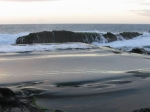
At dusk I swam in a man-made cold sea pool below great, grey cliffs at Hermigua. A man came took the trouble to walk down to warn me of high waves that would overtop the pool walls at any moment and risked carrying away my things.
We picnicked on Palma ham and quince jam sandwiches and in the evenings made meals for each other to Ella Fitzgerald at the cool, dark house we hired 1000m up on the edge of the national park. By the sea in Valle Grand Rey we ate out on fresh tuna, and at Lago Grande in Garajonay I devoured wild rabbit with red and green mojo sauce: one spicy, the other cooling. We covered ourselves in factor 60 because even in the breezes the sun still burnt.
On a barranco high above Vallehermoso we talked to an English couple that dreamed of making a tropical garden. They harvested cancer-beating berries from scrubby bushes in their garden and wondered if they had made the right decision leaving behind a farm in Sussex.
At the end of our holiday, late in the afternoon at the Playa del Ingles on the edge of Valle Grand Rey, we sat apart from each other for a while. A fierce wind blew as we watched 40 foot high waves breaking time after time against the sharp black basalt rocks.
On our last evening I picked an orange from the garden and Dona Efigenia gave us Gomeran bananas and bread for the journey home. At the airport on Tenerife a tall man in a cream suit lay dying on the terminal floor. His head lolled uselessly towards me as a paramedic pushed at his chest again and again and again.
Perhaps because of his death we missed the connection in Madrid. At dusk there I opened the triple-glazed window of the airport hotel and in the warm night air there was birdsong. -
La Gomera 1
Happy I certainly am here on La Gomera, one of the smallest and greenest of the Canary islands. William, Marc, David and I have hired a traditional Gomeran house 1000m up from the sea called Cañada del Hoyito.
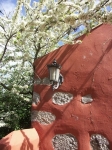
It really is a lovely place. Dona Efigenia, who let it to us, decribed it with good reason as 'muy preciosa' : wood and stone, high ceilings and simple furniture with terraces growing orange trees and sweet almonds in blossom. In the evening the scents are lovely and the stars dot the gaps between the densely growing circle of old palm trees just before the house. Tree frogs make up a chorus with the rattle of goats bells, the goats' bleating cries and the sound of distant dogs.
Efigenia herself is something of a phenomenon, specialising in parting tourists from their cash for peasant food at upmarket prices, where the poor punters pay through the nose for three hours of something one guide book euphemistically calls 'restaurant theatre'.
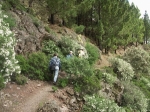
Yesterday was our first and we walked a great arc around this village, down steeply terraced green valleys [barrancos] heavy with the scent of white broom. After the rainiest winter for years Gomera is truly in bloom. We climbed up to the Garajonay national park which is divided between different parishes and is at the heart of the island. It's sub-tropical forest where mist billows suddenly into sunlit glades and the myrtle trees hang heavy with thick lichen fronds.
I swam afterwards at Valle Gran Rey after leaving my things next to a dark-eyed and ringletted Spaniard and his elfin girlfriend. Great breakers were running in on the main beach (we watched as the sun went down). From a restaurant in the port I saw a handsome curly haired man in nautical uniform put his arm around a friend's neck in an easy sensual gesture the intimacy of which seemed at odds with his excited talk.
Today has been a far longer walk from Chipude where we watched effigies of St Veronica and the Virgin being prepared for their tour of the village on Good Friday. We scrambled up La Fortaleza, a sheer wall of jagged rock and the second highest peak on La Gomera. On the flat top asphodel bloomed, elegant stems of flower among the scrub. A mysterious great spiral of low stones led to a circular cairn and beyond other delicately balanced rock piles made me think of Brancusi.
Climbing the last barranco to the highest village on the island we saw a woman on the opposite side of the valley. She carried a tall stick and with whistles and coaxing cries was herding goats home. Later this cocoa brown Miriam Margoyles offered directions and filled our bottle with crystal clear, goaty tasting water.
We missed the very peak of Garajonay, over 1400m, and walked back to a meal of cuttlefish and spicy sausages in the village café. Tomorrow should include a walk to a waterfall and more swimming. -
How are you?
When did that question ever wait for an answer? I always liked 'how do you do?' as a greeting as the only proper answer was perfect symmetry: 'how do you do?' That exchange seems almost to have faded away, dating me to the age of the steam trains I can still dimly visualise pulling out of Paddington in 1967.
A friend used always to answer 'how are you?' with a terse 'yes!'. I think he figured that the question was equivalent to the kind of 'hand-shaking' signals modems exchange when they first connect. The answer 'yes!' was hardy ever noticed. The question was merely a necessity to be endured and a preliminary to any conversation of substance. If I remember correctly, once two modems have established a link in this way, they next 'negotiate' to establish a rate of information flow that suits them both.
Perhaps 'how are you?' performs the same function. There must be a hundred ways of saying 'fine, thanks' or even 'yes', all of them giving different subliminal messages about an individual's mood and receptivity.
The temptation to answer 'how are you?' with a detailed description of medical symptoms is probably best avoided, although it's sometimes worth it for the look of complete horror on your unfortunate victim's face. Best avoided also is the urge to respond with existential mutterings of the metaphysical variety, although I have found these can be very effective when dealing with persistent telephone sales people.
Anyway, how are you these days? -
Rebecca in Cambridge
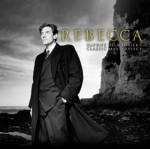
Seen at Cambridge Arts Theatre, 12.3.05.
'Last night I dreamt I went to Manderley again'. Du Maurier's novel makes an enjoyably gripping play in this new adaptation by Frank McGuinness. It begins with the second Mrs Maxim de Winter alone on a beach of white stones, with a projection beyond of breakers running in to shore. Through the projection a dim yellow light picks out the features of Mrs Danvers climbing a great stair. She is fetishistically, erotically obsessed with her lady Rebecca, the first Mrs de Winter. There is an over emphais on sexual deviation in the play: a young footman likes make-up and ginger beer, and the estate manager was almost gay (played by family friend Martyn Stanbridge).
Nigel Havers was excellent as de Winter, and Danvers was brilliantly played with steely focus by Maureen Beattie. There were rather too many laughs in the first half and perhaps the menace grew more slowly than du Maurier might have wished in the second.
A great delight to see such a lavish, well-cast show running with precision. In the final scene the beach becomes blazing coals as Manderley is destroyed by fire. It made a juicily satisfying ending to the evening's entertainment.The houses are record-breakingly good, the cast have incredibly been given a pay rise, and everyone goes home happy. -
Britten's War Requiem: semi-staged
At Pangbourne College Falklands Chapel last weekend.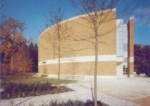
A youth, sepulchre-white and bare-chested, was borne in on the shoulders of his equally floppy haired pals.
Two male soloists spent the performance on a scaffolding tower, one had a glitter ball for company, the other the pale (and still shirtless) boy. The tenor needn't have worried as he had his time later, when the youth popped up on his tower (looking for someone to light his candle). When the soprano had to sing Rex tremendae maiestatis the single follow spot (which had been pursuing her all evening) obliged by tremulously expanding and contracting all over her. Too many excitements, really - very camp. In his madder moments Britten might have approved but I rather doubt it. More's the pity as all this pantomime distracted from the fine music, which was well played.
-
Died in 2005
Zoë Feak
Widow of my primary school headteacher Tom, and at the heart of the village. He made a huge impact on me as a child, not just because he said I had 'no sense of rythmn' or because, aged ten or so, I got to 'idiosyncratic' in his reading test. She was always cheerful, relaxed, and open-minded. Rode a black 'sit up and beg' bike, sang in the church choir, joined local societies and was much loved. Both were perfectly happy when I had the teenage cheek to demand they sell to me some framed ephemera on which they had just outbid me in a village auction.
Zoë died from a chest infection in February 2005. I was told she was alone at home.
Armine Edmonds
Mary Stansfield
John van Went, who was the kindest of men
Mike Beasley, suddenly, while still in his 60s
Gary Howland, in a tragic accident, just outside his house
Simon Kremer, of cancer, while still in his forties
Mrs Catherine MurrayDied aged 97 in November. I first knew her as a child. On our way to primary school, my sister and I used to take a short cut through Sidney Paddick's yard where Mrs Murray worked in the little office to the
left, just inside the gate. She used to wave and give us the sweetest of smiles: a daily blessing from a gentle, kind lady. Our walk to school then took us on through Mr Paddick's garden where we used to chat to Mr Murray, who worked there as a gardener. I remember him as always cheerful, a little man with laughing blue eyes. -
Stockholm July 2001
SURREAL NICENESS
Bright sunlight, clean streets, smiles, the palest of blue eyes - everyone was so unfailingly polite and helpful it almost began to feel like 'The Truman Show'. Even the tray rack in the National Museum thanked us for returning our dishes. But the lady at SAS check-in was a bit uncertain. "Nacka? Why go there?" Because William's friend had an empty flat there, and it's only 20 minutes from Stockholm. Could we swim there? "Oh yes, there's a lake and you can swim from the royal palace steps if you want!"
Stockholm almost deserves the daft label 'Venice of the North': it's part of an archipelago of over 24,000 islands and its historic centre, Gamla Stan, is the boundary between fresh water and the Baltic. Lugging our bags, we wandered across the island at dusk. Four-square 18th century grey and cream public buildings on the waterfronts and narrower streets twisting upwards to the cathedral and royal palace beyond.
Saturday morning and I swam in the Nacka lake. Hot sun, warm water, water-lilies, birch trees and conifers, and great flat rocks to swim from, with just a few mallards for company. Discrete purification equipment kept the water clean. When I came out, even the two small black leeches on my leg were too polite to attach themselves.
HIGH JINKS AT THE PALACE
They were changing the guard (at the palace). Ripples of applause for each new tune from the mounted bandsmen. Mirror-shiny spiked helmets and much marching about. One alarmed looking youth in glasses clung to his mount while he struggled with a tuba that seemed several sizes too large for him. The palace is vast: apparently just one room less than the one in London. Tessin built it and is commemorated in a sculpture in the cathedral. He perches awkwardly half-way up a column, as if he would slide off at any moment.
The royal family have long since shifted to their summer palace on the green island of Drottningholm: but there didn't seem to be anyone at home when we visited. We took a steamship out past Södermalm, Langholm and Stora Essingen, following the Björnholmen into a still reach where the palace basked in the afternoon sun. Its understated classical architecture by Tessin the elder marks the start of the Swedish 'Golden Age'. Gorgeously scented box hedges and water jetting from statues with mythological subjects. A pavilion in faux Chinese style was a present for Queen Louisa Ulrika's birthday. The theatre opened in her honour in 1766 and is the island's masterpiece.
We took a tour of the theatre and were amazed. All the stage machinery is in place and working. Dei ex machina galore fly down on clouds. Candelabra and footlights hardly pierce the atmospheric gloom. Ten men turn a great capstan and the scenery changes, sliding in on tracks in the floor. Copies of the original scenery are still in use. The mouldings may be papier mâché and the marble trompe l'oeuil but the theatre is an incredible survival. As we toured, I imagined members of the court taking part in their own productions, the palace servants filling the benches at the back, the royal family in their own chairs on a blue Persian carpet at the front. I asked if there was any chance of tickets for Così fan tutti that afternoon but was told there was no chance: it was sold out ages ago.
AN AFTERNOON TO REMEMBER
In the museum shop someone has mysteriously heard I'm after tickets: "look out for a man in a pink shirt". The box office opens an hour before and I wait on the grass. Another staff member walks deliberately out across the grass to tell me "there may be a few tickets - make sure you're first in the queue!". So I sit on the step in the sun and wonder. A German in dark suit and waistcoat bought his tickets when booking opened in March. A man in a pink shirt appears. Yes! he has tickets to sell. So I used all my cash to buy one ticket, and hope to get one at the box office when it opens. At last a liveried and periwigged palace servant opens the door. One by one those who are collecting advance tickets are admitted and finally I am called to a little desk inside. Quietly I'm told "we do have the chairs:the people that usually have them aren't coming this evening". Wonder of wonders - these are the royal seats right at the front, and after swapping back the pink-shirted man's ticket I managed to get two of them for William and I!
A great stick thumped down on the stage to bring the crowd to silence and the overture began. The performance was quite matchless. The orchestra and singers were like a musical time machine, taking us back to the golden age and the audience's excitement at the spectacle was almost tangible. To gasps the cast showed off the marvels of the theatre. Their singing was lively and completely involving. The applause at the end brought the performers back again and again.
Where else could you swim in beautiful clear water in front of a royal palace after a performance like the one we had just seen? Slipping into the warm water as the sun's rays lengthened was a wonderful end to the afternoon.
SHIVERING TIMBERS
We swam again the next day, after visiting the royal warship 'Vasa'.
Forget the Mary Rose! The 'Vasa' is vast and was recovered in astonishingly good condition almost 350 years after it capsized on its 1628 maiden voyage. There was a rich smell of old timber in the huge, dark and cool museum. The crowd was buzzing enthusiasm, swarming round the great timber hull. Hundreds of twisting carvings in the darkest oak seemed to writhe on its surface. There were monsters and savages and emperors - all to glorify king and country and terrify their enemies. We saw the ship's carpenter's timber chest with its untouched brace & bit, leather hats and shoes and gazed and gazed at all the interpretative exhibits.
The 'Vasa' really was over the top: 69 metres in length, with less than 5m of the hull in the water and more than 15 above. The king was fighting in Poland the day crew men rushed from side to side as the warship was moored before the palace. If he had been there he would have seen its swaying instability. 50 of the crew of 450 lost their lives when a wave hit just out of harbour on its maiden voyage.
VIKING MERMEN?
What else to do but swim again? We took the Stockholm Metro (the T) to Langholmen. Once a prison island, now green, with paths leading past allotment gardens to a popular beach. Around 7pm we walked right to the very western end of the island. Like mermen, with fleshy Caravaggio faces and long blonde hair streaming out in the water, three people played in the water: diving for rocks and laughing in the sunshine. A latter-day Byron, William breasted the choppy water, crossing the sound and waving at me from the shore. Silent now, the three mermen rested in a willow tree which jutted out low over the water.
On our last day we had time to walk Södermalm, south of Gamla Stan. There are wonderful views of the city, the Katerina Kyrka restored to stunning pristine whiteness after a fire, and picturesque streets with red-painted timber and stone houses.
Three and a half days and we'd hardly begun to discover Stockholm.
I hope to go back and can recommend it.
We also went to:
The Riddarholmskrykanburial place of kings
The Modern Art Museet on Skeppsholmen (impressive new building by Spanish architect, works by Picasso, Mondrian, Chagall, photographic collections and large special exhibition space: wonderful views from restaurant)
The National Museum (Rembrandt, vast murals, print collections)
The Far Eastern Museum (stunning bronze Shiva, Chinese scroll painting, porcelain including beautiful, simple celadon ware)
http://www.stockholmtown.com/pages/271/index.asp
http://travel.yahoo.com/t/Europe/Sweden/Stockholm/natgeo1.html
http://travel.roughguides.com/content/25954/index.htm
Byron: http://www.turkishodyssey.com/places/marmara/marmara8.htm -
Joint fortieths, February 2001
[archive post]
51 of my & Jeremy's nearest and dearest converged on the Crooked Billet in deepest Oxfordshire last Sunday night. Low ceilings, warm fires, the darkest red walls in a long room flickering with candles. The young (my nieces at 4 months) and the old (Jeremy's father at 82) the short, the tall, the quiet and the loud and the distinctly other. Such an excited buzz as we walked into the pub. Cava and salmon, kisses and all the birthday wishes. Last minute panics forgotten once we'd got the nameplaces out.
The excuse was our joint 40th birthdays, and perhaps a chance to make up for all those other celebrations that usually bring together the generations. Was it my imagination or were our welcomes a little reminiscent of a 'receiving line'? Did Spencer really stand in an ante-room clutching a tableplan discretely enquiring 'bride or groom?'.
Earlier we'd walked up on Swyncombe Down: exercise, misty views and milky sunshine. We sat on the grass eating crisps and chocolate. Marc, Jeremy, Spencer & Piers in tailored dark blue overcoats like middle-aged popstars making a comeback or a clutch of clerics out for a constitutional.
At the Crooked Billet the presents accumulated at a table close by the fireplace. Unexpected kindnesses of every kind. And a dawning satisfaction - even joy - that these were almost all the people we cared for and that together in all our ways over the last 24 years or more we'd somehow managed to make interwoven lives of richness and meaning.
The food came promptly without fuss. Plates piled high with oysters; squid rings, avocado, half lobsters. Pheasant in a currant sauce, succulent slices of lamb, sea-bass and half a dozen more.
And the room filled with the happy conversation - Jeremy's friends and mine mixed and matched. Nan discovered in Al another indexer. Mike and John that they had violins as well as IT and me in common. Sue got on famously with Lawrence and Caddy, demonstrating her voice production technique by ordering 'water!' in her fullest voice. Simon expertly drew Christian out in conversation. Whether through planning or chance all the combinations were a huge success. The Crooked Billet staff said what lovely people were gathered and everyone praised the gorgeous food they served so efficiently and discreetly.
Little ripples of applause kept breaking through the hum of conversation. Philip the magician made rings disappear and produced the very card we had in mind again and again. There were gasps when he levitated and everyone wanted more. Only Linda managed to get his telephone number.
I made a little speech and my biggest thrill was when I asked if people were having a good time. In a moment they roared "Yes!" And I forgot to give my mother credit for the most difficult bit and to thank so many for being gold medallists in the sport of waiting-for-David. But I meant what I said about the preciousness of friendship, especially friendship as long-lasting as that between me and Jeremy.
Before coffee he and I sent two big rockets shooting into the foggy sky. Down the slope in pitch black, sparkling taper to four second fuse, then woosh, a huge bang, and great flowers in the sky.
After the meal my mother held court in one corner with the lop-sided gravitas of a slightly tipsy magistrate. In another, Jeremy's vicar-cousin Simon found himself among friends and became more and more entertainingly raucous as the evening went on. By the evening's end he was a vision of contentment sitting by the fire bottle-feeding Sarah - Marcel Wagner offered a commentary, urging me on to the joys of nappy changing.
By 11.30 people were beginning to fade into the foggy mist that made the pub seem even more remote from care. Because of illness Lee & John never got to meet Nan & John, and Rosie's John missed out too. Mark in Holland, Grace in Boston and Sophie on her way to Morocco couldn't make it either. But for us there was birthday cake and more singing and another round at midnight when it was Jeremy's turn to complete his fourth decade.
What a night it was! What people were there! 24 hours later and the buzz and the specialness of it all is still with me. The pictures I took with the amazing new camera got wiped in an inattentive moment, so this and bright memories of such happiness at the end of a week of joyful celebration will be the reminder. -
Crete July 2000
Crete was blissful. Stone built house at the head of a valley in a rough old village high above Paleochora. Sheep drifting on to terrace where we ate in the evenings. Goats' bells in the darkness. Long walks in amazing sunshine with the scent of herbs: wild sage, rosemary and thyme (but no parsley).
A pretty disparate group. Gary with painted toenails and a foofy little finger ring was endlessly 'comfortable with his sexuality' and bedded a blonde lawyer called Sara to prove it. Sarah was a Liverpuddlian lifelong hippy with cats that have tried every psychotropic known. We tai chi'd in an olive grove by a stream. Azigores describes itself as a paradise village, but Eden is deserted these days. Ruins all around and two scruffy bars with a very un-reconstructed clientele.
On Wednesday we walked down the gorge to a deserted beach for a swim. Gary, the course leader and I had marched on ahead and as he wondered out loud about not bothering with clothes I slipped in the water. It was only slightly embarrasing wading out afterwards -without a stitch - once the rest of the group had assembled (fully clothed) on the beach to watch us...
On Friday there was a barbecue. A man who'd been brought up in the house where we staying was always around the place. He was poking sticks into the firebox of a great rusting piece of apparatus that evening. A pipe connected with another container and from it ran a thin stream of clear liquid. Firewater! He was making the most astonishingly potent raki and it seemed incredibly churlish of me not to try it.
Our meals were vegetarian but on Sunday morning we were woken by the screams of a pig being slaughtered. Later the corpse hung dripping in the doorway of the bar where the owner had been so welcoming the previous evening.
She gave us all apples and showed the bread oven she still uses. As a young woman without a dowry she'd embroidered astonishing pictures from local silk as a dowry. Her elderly husband slumped in a vest in the bar.
We went our ways with promises of a London reunion. Something very satisfying about cheating the season by flying south at the end of autumn. The effects are just wearing off two weeks later.
-
Granada July 2000
We left at 1.45 on Monday. Me straight from the university, my briefcase stowed away in a cupboard, still fretting about the rush work only just finished in time. Julian fresh from his time off before starting a new job.
Got to the airport in time, the flight was on time - whatever was happening? The lady with the placid baby next to me suddenly launched into the story of her uncle and his fifty year love affair with a deck-hand from his private yacht and promised that in Granada we'd have a fine time. We found ourselves in the hire car and on the outskirts of Granada in under two hours. Julian confused the Alhambra Palace with a block of flats but eventually we got to the Generalife Hotel, beside the Alhambra gardens on a hill overlooking the city.
Heaving with wrinkled German ski-ers après ski-ing to a maudlin disco, the hotel did not promise well. We launched out into the night looking for a square where we were promised tapas just ten minutes walk away. 30 minutes
later we were holed up in a smoky bar in altogether the wrong part of town. Me eating chorizos off a great wooden board, Julian a more appetising baked potato.
With just two days in town we were in for a busy schedule: Tuesday the Alhambra, Wednesday the the Arab quarter, Sierra Nevada mountains and the Cathedral area. How to describe the Palace? Boabdil wept when the Spaniards finally forced him out, ending 700 years of Arab rule in Spain. His mother rebuked him for crying like a child for what he could not defend as a man. Great raw red walls top the hillside - like the hull of a vast liner, the prow jutting out over the town. Within the walls a massing of roof lines and everywhere water: fountains playing, still pools, rivulets cooling the road edges.
Le Corbusier praised the design of the state appartments for their human scale and perfect proportions. In accordance with Islamic law, no representational decoration was allowed, but almost every surface is covered with the most intricate incised plaster work. Delicate filligree patterns twist and turn around the arches and columns, expressing the ordered hierachy held in place by the Islamic state. Arab calligraphy proclaims the omnipotence of Allah in a stylised motif that repeats again and again. Geometric tile patterns line the walls and the ceilings are a mass of repeating sculpted geometic shapes.
The beauty and perfection of the proportions is hard to describe, but still remembered is the slaughter of two dozen or more young knights: their decapitated heads tossed into a great alabster bowl. In the gardens the mimosa was in bloom, the orange trees were full of fruit and the temperature was around 17 degrees. Dozens of interweaving jets of water made a great roar of sound along a terrace overlooking the palace below. The snow capped Sierra Nevada mountains provided a ravishing backdrop.
Inside the church built to obliterate the palace mosque by the first Spanish king to re-occupy Granada I was struck by the contrast between the art of the two cultures: Bach blared from a loudspeaker, a garish gilded altar piece with images of the saints, caricatured lessons for the illiterate people.
After a drink in a hotel built in about 1908 as a tribute to the Alhambra palace we ate in a restaurant empty but for us with a fine view over the city. Restaurants don't open until at least 8.30. We were meticulously served wine by an attractive blonde. "The Maitre de" hovered. The food was pretty dire!
Next morning we walked down to the town (again) and like the duke of York up the hill again. Walking (or rather climbing) was inevitable since we were at the top of one hill, the centre of the city at the bottom, and the parts we wanted to see were at the top of then next hill.
Tha arab baths were not (as I fondly imagined) still working. Up the river to a plain building, through the courtyard of the guardian's house and into an emty series of rooms with simple geometric patterns cut in the ceiling the only source of light. Strange to think of the rooms bright with tilework, full of steam, tubby Arab merchants panting in the heat 500 years ago.
Up through a network of narrow lanes, some buildings barely habitable, great handfuls of electrical cable bunched together loosely snaking from house to house, and signs of arab influence everywhere. Here the tilework on a balcony, there signs of some patterned decoration slowly blurring with the passage of time. St Nicholas' church offers a famous view of the palace - but when we got there the sun was full upon us, the view obscured. We promised to return in the evening.
We saw the Royal Chapel built to commemorate King Ferdinand and Isabella. Pompous sculpture of reclining figures conceal the simpler sarcophagi Isabella intended as their monument in the crypt below. A sublime van der Weyden tryptych fought for attention with reliquaries and embroidered vestments.
The narrow streets in the centre of the old town were dirty and traffic choked. We walked the mile and a half back up to the cleaner air and the hotel and took the car into the mountains. At some 3400m Pico de Veletta claims to be reachable by the highest mountain road in Europe. Because of the heavy snow we only got to 2500m, the temperature down by ten degrees, but still in glorious sunshine.
I chatted to a member of an English film-crew, his face tanned brown from a week making an orange juice commercial. Equally dark-skinned, shaven headed national servicemen skied past us, rifles sticking from their rucksacks. We set the camera to take an auto-timer portrait as we sat on a rock overlooking the ski runs below.
Back to the town and a mad dash to St Nicholas for the Alhambra at sunset. Crowds of travellers sitting on the wall, while an old woman clacked castanets and screeched cante honto. Some evenings "the green flash" lights up the sky at sunset - a bizarre light shooting up from the horizon as the last rays of the sun disappear. That night we were unlucky.
Again and again we saw a poem that reminds the traveller how sad it is to leave Granada - cut into a stone on the walls of old fort in the Alhambra or in a fountain within the old caravanseri we saw in the town. Perhaps if I go back...
That night we ate our last dinner high up in the old arab quarter. Again we were the only ones eating. As we emereged afterwards on to a small square fronted by an old convent church we saw a bizarre cage like structure move slowly in the doorway of the church, supported on the shoulders of several dozen Granadans. In time to mournful music, they shuffled slowly out of the building, huge concrete beams weighing down the steel structure. This was Ash Wednesday and they were practising, as perhaps someone had done for generations, for a processional showing of some great statue.
We fell into bed, worn out by all our walking and by 10.30 the following morning were back on the road to Malaga airport. A short break, but a time to remember! -
Ibiza June 2000
[archive post]
It began with an apology. I was off to the island of Ibiza “but not the usual Ibiza” – just in case the check-in man confused me with the ‘Ibiza Uncovered’ crowd (as if I ever would). He mimed just the right amount of polite interest, my sky blue yoga mat and rucksack disappeared down the conveyor and two flights and five hours later I was in Dalt Vila – ancient fortified Ibiza town.
The Phoenicians apparently thought the island had the power to heal; much good it did them when they chose to be buried here in a necropolis facing seawards just beyond the limestone walls of the citadel. The Moors took the Island, then Phillip fortified it and tried to make it part of Spain. The islanders are fiercely independent – even from Formentera nearby, and their own language lingers. The hippies came in the sixties, the tourists in the seventies, and ‘club culture’ arrived in the nineties.
The island is dust dry today. The last streams dried up years ago and water has to be brought from the mainland and stored in huge concrete cisterns. Giant prickly pears, aloes and other succulents proliferate in the powdery red soil, basking in strong sun that rarely gives way to rain. The crops are olives, almonds, wine and tourists, with fishing continuing mainly as a hobby.
Dripping I lugged my heavy rucksack up hundreds of steps to get a view of the sea from the fortress walls. Brilliant turquoise water against stark blue sky, rocks shimmering in the heat. Huge cargo ships on the horizon seemed to drift listlessly. An English family were agape at my seeming fitness. They plainly hadn’t encountered the yoga apprentices at Can Am des Puig where I spent the next week.
The taxi driver was unsure where he was taking me. Right at Sant Mateu pueblo, then left by the blue stones after the vineyard. The directions didn’t mention a half mile climb up a network of precipitous tracks before I got my first sight of the house in a wood of scrubby swaying pines. Godfrey Devereux (or Sri Godfreyi as he was unbelievably described on one hand-out) set up the yoga centre three years ago, in a house built of great lumps of stone with three dry terraces stretching out in the wooded garden beyond it. On the terraces he put up US army bell tents and white teepees and in the furthest corner a large white geodesic dome for yoga practice with a clear wall facing out down the hills to the sea.
Into the shaded kitchen, stone floor, terracotta walls, introductions and a cup of twig tea, made of some caffeine-free part of the bush and my first encounter with the macrobiotic diet. Imagine: no tea, coffee, booze, chocolate, meat, potatoes, flour, dairy foods, tomatoes, fish or eggs! You might think there wasn’t a lot left fit to eat, but I didn’t miss them (really), eating lots of fruit and vegetables, grains and pulses from large decorated terracotta bowls, chewing carefully as instructed. We ate mostly in the garden, looking out over the countryside to the coast below, sometimes talking hardly at all. The sounds were from the countryside: cockerels, distant barking and the harsh sound of a peacock in Sant Mateu below us.
I confess to escaping for cool ‘Damm’ beer one night and to eating (without the slightest guilt and with huge enjoyment) several ice-creams and even the occasional tea on afternoon swimming trips. Godfrey’s German wife Anita is easily the most irrepressible person I’ve met. A big voice and a huge laugh that could be heard all over Can Am. They have a wide-eyed daughter with a great mop of bleached blonde hair and a fierce energy that copes easily with the weekly influx of visitors.
I slept in a green tent cut with slits that made the early morning light shine like stars when a drum sounded the call to 8am practice.
Improbably enough Buster the Swedish dancer effortlessly twisted himself into the yoga poses. Standing with a leg pulled from one toe out and up to his chest, then his head on the floor looking backwards between his legs. Legs spread, deep bends on one knee with his hands together in a gesture of prayer. Tanned in a tight slip, all lean sinew, his skill was matched by Dylan, a Harvard graduate, his girlfriend Hummaya (after a goddess), Sarah and the other apprentices. All glowed health, clear eyed with an easy energy. I was probably the least experienced among the new arrivals. They included an Akido teacher, a personal fitness trainer, a grad student/masseuse and a teacher of the Alexander Technique. Anglo-Indian Barry had practised for 25 years and had never encountered teaching so precise and effective.
Godfrey’s instruction ranged from the sensations to be found in one finger to the spiritual aims of yoga (which means unity, oneness). Freedom from desire, from the encumbrances of the past, from inconsequential thoughts and from interpretations projected on to others made a kind of blissful contentment possible. In meditation after the three hour sessions people burst into tears: great racking sobs as something he’d said particularly touched them. The concentration was intense and as the sun grew stronger the air was steamy.
On all but two nights when there was torrential rain I drifted into sleep easily, lulled by wind in the pines, needles dropping gently on to the canvas.
Three of us hired a car and made afternoon trips to beaches and villages around the island. Irridescently orange and large transparent jellyfish made swimming difficult at several beaches, and we went several times to naturist Agua Blanca where great rollers crashed on to a white shore with cliffs behind.
One afternoon I sat and read Harry Potter in the shade of a fisherman’s boat shelter. A frenchwoman who said she was “waiting for Buddha-hood” lent me her goggles - in the meanwhile - and I drifted in rocky pools gazing down at brightly coloured fish in the brilliantly clear water.
Another day I walked for an hour down the hill from Can Am, following a zig-zagging path through woods and fields, past the view I’d put on the centre’s brochure cover (since I swapped design work for the trip) and finally down a sandy boulder strewn cliff path to a perfect rocky bay. I paddled lazily around some rocks at such ease in the warm-cool water. Just half an hour later I climbed back up to Can Am for a (punctual!) evening practice.
Swathes of the Ibizan coastline has been spoilt by 70s hotel blocks – great tiered slabs of concrete slapped against the hillsides. In one town we saw the ‘hippy market’. It’s now an official tourist attraction with its own T-shirts and hundreds of stalls selling everything batiked, folksy and brightly coloured. I bought a Kashmiri silver bracelet of the kind I’d meant to find in India as a reminder of my trip there.
On Ibiza a few of the Englishman abroad lived up to their reputation for beery swagger, beetroot colour and loudness, but most of the visitors were relaxed families, from all around Europe. We made one trip to Ibiza town at night, re-tracing my steps the first hot afternoon. Subtle lighting showed our way up the rampart steps and from a look-out we could hear the bats’ calls as they circled above us. Gay men seemed to be everywhere in the town that night: in the Calle des Virgens, where the bars are concentrated, cruising in the shadows at the foot of the city walls, and relaxing in the Plaza da Villa inside the walls. Barry and Mandy said they saw Peter Stringfellow decorated with an appropriately juvenile bimbette in the café A la Olivia: but that was the closest I got to the Ibiza club scene.
I left on Saturday with a mixture of relief and a kind of anxious sadness. Sad to leave people I’d got to know and anxious that if I were to take away anything lasting from the trip it would need dedication and discipline I’m not sure I possess. I’ll keep in touch with several of them, I’m sure, and some are already making plans for further visits this autumn.
On the plane I got chatting to (or was chatted to, for once) a young Spaniard from Barcelona who was part of a performance group that had just given a show in Ibiza. He asked me to read him Baudelaire (in French) and said I should re-arrange my onward flight to stay with him in his flat in the city with 3m high ceilings and a trapeze. A futurist arts festival opens there and his show (about fashion and morality) was to be repeated. Maybe I was insufficiently freed from my desires and projections, perhaps I was just keen to be back, but I thanked him and said I had to travel home…
